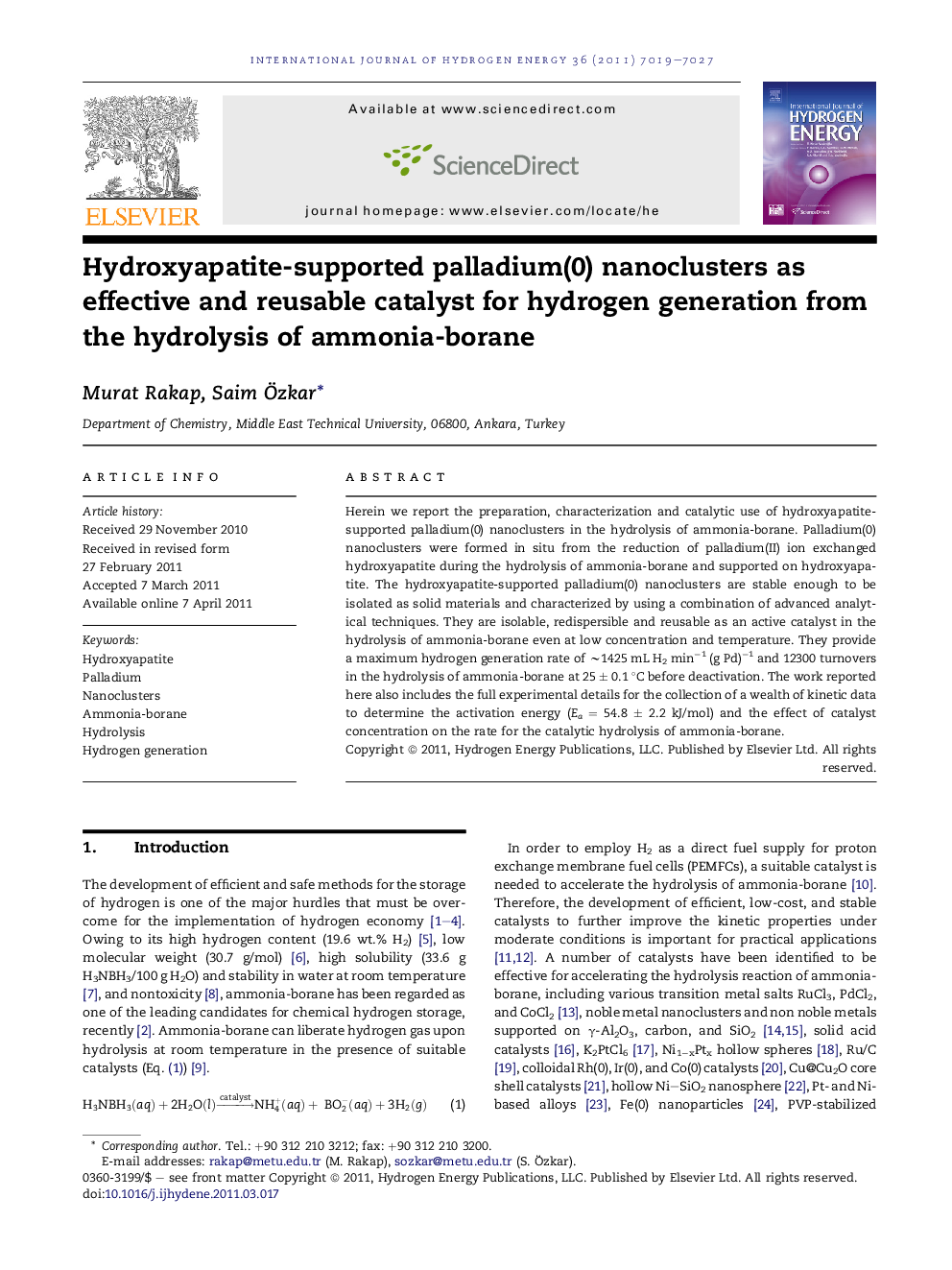| Article ID | Journal | Published Year | Pages | File Type |
|---|---|---|---|---|
| 1272089 | International Journal of Hydrogen Energy | 2011 | 9 Pages |
Herein we report the preparation, characterization and catalytic use of hydroxyapatite-supported palladium(0) nanoclusters in the hydrolysis of ammonia-borane. Palladium(0) nanoclusters were formed in situ from the reduction of palladium(II) ion exchanged hydroxyapatite during the hydrolysis of ammonia-borane and supported on hydroxyapatite. The hydroxyapatite-supported palladium(0) nanoclusters are stable enough to be isolated as solid materials and characterized by using a combination of advanced analytical techniques. They are isolable, redispersible and reusable as an active catalyst in the hydrolysis of ammonia-borane even at low concentration and temperature. They provide a maximum hydrogen generation rate of ∼1425 mL H2 min−1 (g Pd)−1 and 12300 turnovers in the hydrolysis of ammonia-borane at 25 ± 0.1 °C before deactivation. The work reported here also includes the full experimental details for the collection of a wealth of kinetic data to determine the activation energy (Ea = 54.8 ± 2.2 kJ/mol) and the effect of catalyst concentration on the rate for the catalytic hydrolysis of ammonia-borane.
► Pd(0) nanoclusters were formed by reduction of Pd(II) ion exchanged hydroxyapetatite. ► They were characterized by ICP-OES, XRD, ATR-IR, SEM, EDX, TEM, and XPS. ► They provide hydrogen generation rate of ∼1425 mL H2 min−1 (g Pd)−1 and 12300 turnovers in the hydrolysis of ammonia-borane at RT. ► They are promising catalysts in developing highly efficient portable hydrogen generation systems.
